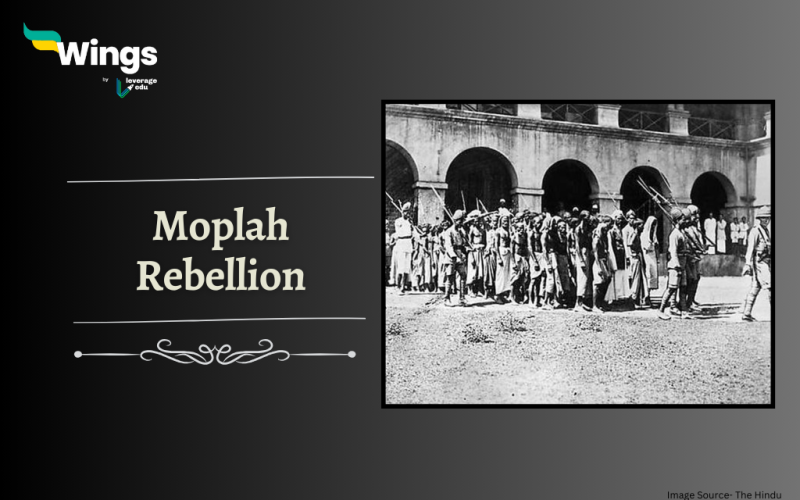The Moplah Rebellion of 1921, also recognized as the Mappila Lahala in Malayalam or Moplah Rebellion according to British Colonial records, represents a pivotal moment in the history of southern India. This peasant revolt was set in motion by a blend of socio-economic factors, land ownership disputes and the political milieu of the era. As we delve into this significant event, we will explore its origins, the rebellion itself and its far-reaching consequences.
Table of Contents
Story of Land Ownership in Malabar
The roots of the Moplah Rebellion can be traced back to the intricate network of land ownership in the region. Malabar’s agricultural system was historically structured around privileges, rights, and obligations for various social groups. At the apex of this hierarchy was the Jenmi, composed mainly of Namboothiri Brahmins and Nair chieftains, who held hereditary land grants from the rulers.
Traditionally, the Jenmis, owing to their status as priests, refrained from personally cultivating the land but delegated it to Kanakkars in exchange for a portion of the crop yield. Nonetheless, during the 19th century, a substantial conversion to Islam took place among lower-caste communities, liberating them from caste-based constraints.
Other reforms were also implemented during this era. The rule of Tipu Sultan displaced the Jenmi from Malabar, ushering in a novel land revenue system based on actual land produce. However, the East India Company’s takeover of Malabar reinstated the land rights of the Jenmi and introduced Western notions of property rights.
This transition in land ownership empowered the Jenmi to evict tenants, resulting in escalating rents, sometimes reaching 75-80% of the net produce. This drastic transformation in land tenure deeply agitated the Mappilas, the indigenous Muslim community in Malabar, who had traditionally toiled as agricultural labourers on land owned by upper-caste Hindus.
Also Read – Santhal Rebellion: Background, Causes and Significance
The Moplah Rebellion Takes Shape
The Moplah Rebellion erupted on August 20, 1921, persisting for several months and prompting the British authorities to impose martial law to suppress the uprising. The rebels, grappling with economic hardships and radicalization by a minority, were motivated by a convoluted set of factors.
One pivotal catalyst was the Khilafat Movement of 1921, which protested against the removal of the Ottoman Caliphate after World War I. Initially, the rebels targeted government establishments to acquire arms and resources, aiming to establish a Khilafat state. Notably, their initial targets were not Hindus or landlords but police officers, collaborators, and government property.
As the rebellion gained momentum, it evolved, with attacks on British officers becoming more frequent. By October 1921, the unrestrained violence became intolerable, affecting the general populace. The uprising resulted in the tragic loss of approximately 10,000 lives, including 2,339 rebels, and instances of forced conversion to Islam.

Response And Aftermath
- Following the rebellion, the Arya Samaj initiated the Suddhi Movement to reconvert over 2,000 Hindus who had been forcibly converted to Islam during the uprising.
- Several leaders of this movement were sentenced to death in the wake of the Malabar Rebellion.
- To quell the unrest, the colonial government established a specialized quasi-military unit known as the Malabar Special Police, initially comprised of non-Muslims and trained by the colonial army. This special force engaged with the rioters and ultimately brought an end to the rebellion.
- One tragic incident that left a lasting impact was the Bellary Train Tragedy, also known as the Wagon Massacre.
- In November 1921, nearly 100 people were transported by train from Tirur to the Central Prison in Bellary. Shockingly, 64 of them were discovered dead when the wagon was opened in Podanur. This incident, attributed to negligence, further discredited the British Raj and garnered sympathy for the Indian independence movement.
Also Read – India’s Journey to Independence from 1857 to 1947
Significance of the Malabar Rebellion
The Moplah Rebellion of 1921 in Malabar, India, holds historical significance as one of the earliest nationalist uprisings in southern India against British colonial rule and upper-caste Hindu landlords. It revealed the discontent among marginalized communities, particularly the Mappilas, over land ownership and socio-economic injustices.
The rebellion’s connection to the broader Khilafat Movement added a dimension of anti-imperialism. Though marked by violence, it highlighted the complexities of communal relations in India and contributed to the broader discourse on agrarian struggles and the fight for independence. The rebellion’s memory continues to influence discussions on land reforms, social justice, and historical perspectives in India.
Concluding Remarks
It remains a multifaceted and contentious episode in Indian history. It was a complex uprising driven by socioeconomic disparities, land ownership disputes, and the political climate of the era. While some perceive it as an agrarian movement or anti-imperialistic rebellion, others categorize it as a communal riot. Regardless of one’s perspective, it left a profound impact on the region, engendering religious and social tensions that continue to be analyzed and debated to this day.
FAQs
The Moplah Rebellion which happened somewhere between the 19th and 20th century was started by Mappila Muslims of the Kerala state of India. It was an armed revolt led by Variyamkunnath Kunjahammed Haji, intended against the British and Hindu landlords of the Malabar region.
The famous Moplah revolt started in Kerala, India.
The Moplah rebellion was sparked by numerous factors. Among others, the economic condition of the Muslim peasant community was a significant reason. They were cruelly exploited and tortured by Hindu landlords to pay unjustified high rents.
Relevant Blogs
We hope you liked our blog on the Moplah rebellion. If you want to read more articles like this, you can get Study notes on the Modern History of India here. Also, you can visit our general knowledge page on Indian History!
 One app for all your study abroad needs
One app for all your study abroad needs













